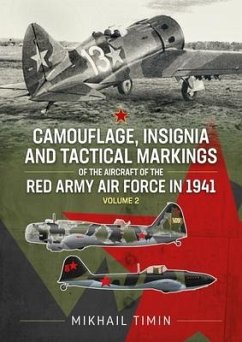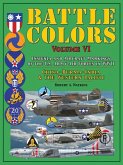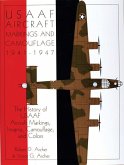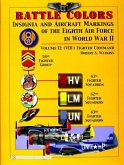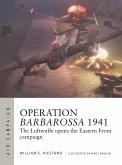A collection of unique photos from Soviet and German archives and private collections as well as color plates featuring camouflage, insignias and tactical markings of the period. The Soviet Red Army command attached great importance to military camouflage. Following the Civil War of 1918-1920, camouflage issues were the subject of careful study. This led to a number of measures that involved the armed forces. Thus military aviation was not overlooked. Along with the camouflaging of airfields and installations, attempts were made to make aircraft as invisible as possible both on the ground and in the sky. This was done by applying painted schemes, the requirements for which were regularly updated. However, despite the theoretical research, camouflage was not widely employed until 1941. It was only after the outbreak of the Great Patriotic War that standard black and green camouflage and a scheme for applying color spots received official approval. Meantime, in various Air Force formations and units, as well as aircraft production factories, camouflage was often applied without observing the prescribed scheme and approved colors. The red five-pointed star insignia were applied on the Soviet airplanes during 1920s and 30s, but the shape, dimensions and locations of the insignia changed several times during 1941. Furthermore, tactical markings applied in accordance with officially sanctioned application of identification marks and ciphers were not adhered to either and principles of tactical markings often differed. A landmark reference work of aviation history, Camouflage, Insignia and Tactical Markings of the Aircraft of Red Army Air Force in 1941, Volumes 1 and 2 contain more than 880 unique photos from Soviet and German archives and private collections and 470 color plates featuring camouflage, insignias and tactical markings of the period. Volume 2 covers: - Identification Marking and Designation System of the VVS RKKA in 1941 - Additional Tactical Markings of the VVS RKKA Aircraft in 1941 - Changes in the Aircraft Camouflage and Tactical Marking System of the Leningrad Military District Air Force (Northern Front Air Force) in 1941 - Changes in the Camouflage and Tactical Marking System of the Aircraft of the Transcaucasian Military District Air Force in 1941
Hinweis: Dieser Artikel kann nur an eine deutsche Lieferadresse ausgeliefert werden.
Hinweis: Dieser Artikel kann nur an eine deutsche Lieferadresse ausgeliefert werden.

